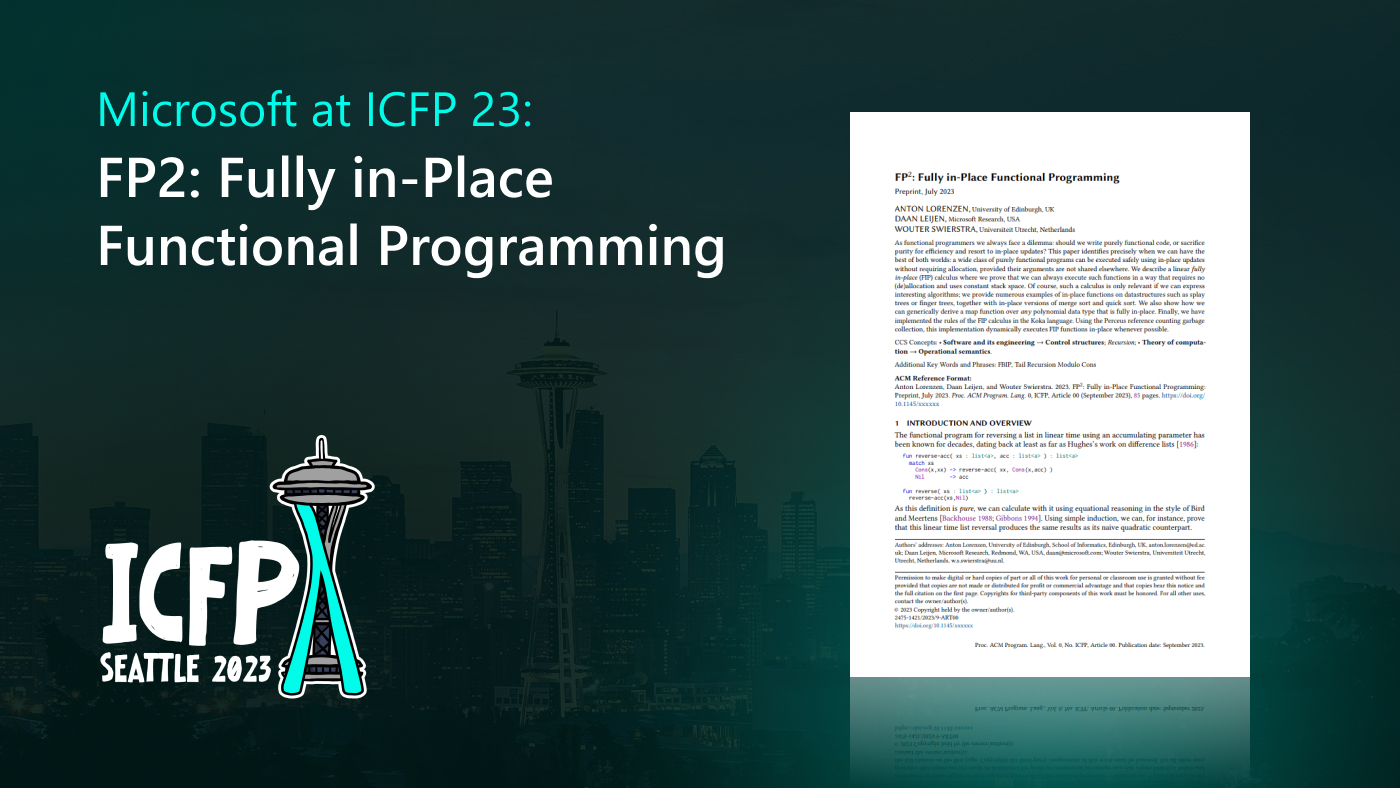This research paper was presented at the 23rd annual ACM Interaction Design and Children Conference (opens in new tab) (IDC 2024) the premier forum for inclusive child-centered design and learning.

Between 2016 and 2018, Microsoft Research and the Developer Division developed Microsoft MakeCode, a versatile, free web-based platform aimed at teaching coding. While MakeCode supports various devices, one notable application is with the BBC micro:bit, a compact, feature-rich computer designed primarily for students aged 11 to 14. Despite the success of the platform, now used in over 60 countries with more than 8 million micro:bits, it faces challenges, such as the need for a continuous internet connection and access to a computer, which can be limiting in nonclassroom environments and distracting due to competing online content.

MicroCode: Mobility-focused visual programming
Our paper, “Meet MicroCode: a Live and Portable Programming Tool for the BBC micro:bit,” presented at IDC 2024, addresses these issues with MicroCode, a portable programming approach that makes it possible to program the micro:bit anywhere—whether in a classroom, outdoors, or on the bus—without needing a separate internet-connected computer. The MicroCode system leverages two technological advances to enable portable programming:
- micro:bit V2: The micro:bit V2 has 128 kilobytes of RAM and a faster processor than its predecessor, allowing it to support a small external color screen.
- Arcade shield: This is a low-cost, battery-powered, handheld device into which the micro:bit V2 can be inserted. It provides a color screen and inputs that enable live and portable programming. The shield pictured in Figure 2 is one of three commercially available Arcade shields for the micro:bit V2.

Research shows novices’ willingness to adopt new programming tools often depends on how easy, familiar, and understandable these tools are. This drove our decision to use the Kodu (opens in new tab) visual programming model for young children and beginners. We created a mini version of the Kodu editor specifically for the micro:bit V2, enabling users to fully utilize the device’s hardware features to create simple programs.
The complete system—editor, user’s program, compiler, and runtime—is integrated into the micro:bit V2’s permanent memory. This allows programs to keep running even when the device is disconnected, to be edited again once reconnected, speeding up the development process and making portability a reality. The user-friendly interface enables cursor-based editing for creating and modifying Kodu’s “When-Do” rules and editing 5×5 images, as shown in Figure 3. The shield’s directional pad and buttons make for smooth navigation and selection.

Evaluation and findings
To evaluate the impact of MicroCode, education researchers at Lancaster University conducted a study across three UK schools. The findings, reported in our paper, reveal that MicroCode effectively supports micro:bit-based learning at the primary level, engaging children and giving them a sense of agency. By simplifying the process of updating programs in real-time, MicroCode has expanded the learning context to include activities such as outdoor data collection. Furthermore, this innovative tool has inspired teachers to explore the integration of physical computing into a broader curriculum, transcending traditional boundaries of computing education.
on-demand event
Implications and looking forward
MicroCode has transformed the programming environment for the micro:bit, providing portability and the ability to improve the classroom experience. Compatible with the Jacdac plug-and-play system, MicroCode extends its functionality with easy-to-connect peripherals like sensors and actuators. This integration expands the micro:bit’s capabilities, enabling it to detect environmental changes and control various devices. Additionally, MicroCode can now remotely operate an array of robot accessories through the micro:bit’s radio protocol.
Our collaboration with academic and industry partners is just beginning, and we’re eager to explore this tool’s full potential. For example, we’re currently testing new MicroCode backpack kits to facilitate learning outside traditional settings. Our goal is to empower educators to extend the portable programming approach beyond the classroom.
Looking to the future, we envision MicroCode as a cornerstone in schools for an extensible creative computing platform applicable across multiple subjects. One exciting development is MicroData, a new application pioneered by a student from Lancaster University. Derived from MicroCode, MicroData focuses on data science, enabling students to collect and analyze environmental data or assess the impact of chemical reactions in real-time. This innovation highlights the platform’s versatility and potential for fostering rapid experimentation and interactive learning experiences.
MicroCode is available on GitHub (opens in new tab) and built with Microsoft MakeCode Arcade (opens in new tab). The web app (opens in new tab) version is also available for those without a shield.
Acknowledgements
We would like to thank the Micro:bit Educational Foundation, the Microsoft MakeCode team, and our colleagues at Lancaster University for their support and contributions to this work.





